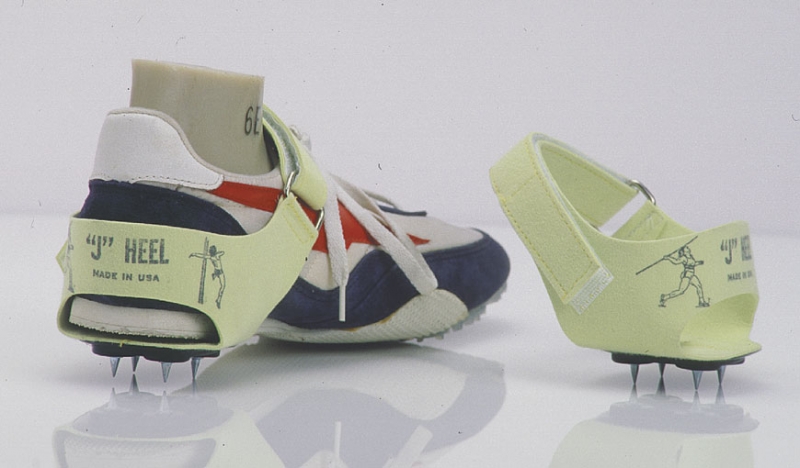The javelin throw is a demanding event in track and field that requires a blend of strength, technique, and coordination. One often overlooked aspect that can significantly impact performance is footwork, specifically the use of the heels. This article will explore the importance of heel drills in javelin training and how they can enhance throwing skills.
The Role of Footwork in Javelin Throwing
Before delving into specific drills, it’s crucial to understand why footwork matters in javelin throwing. The throw involves a complex sequence of movements where power is generated from the ground up. Proper foot placement and movement are essential for maintaining balance, transferring energy, and ensuring optimal body alignment during the throw.
In javelin, the approach phase is critical as it sets up the athlete for the delivery. During this phase, athletes transition from a sprint to a crossover step, leading into the final plant and throw. The use of the heels, particularly during the crossover and plant phases, plays a pivotal role in ensuring a smooth and powerful transition.
Importance of Heel Drills
Heel drills focus on the precise use of the heels during the approach and throw. These drills help athletes develop a better sense of balance and control, improve their ability to transfer energy, and enhance their overall technique. By emphasizing the role of the heels, athletes can work on achieving a stable and powerful base, crucial for a successful javelin throw.
Key Benefits of Heel Drills
- Enhanced Balance and Stability: Proper heel placement helps athletes maintain balance during the approach and throw. It ensures that the athlete remains grounded, reducing the risk of over-rotating or losing control.
- Improved Energy Transfer: The heels play a critical role in transferring energy from the ground up through the body. Effective use of the heels can help maximize the force generated during the throw, leading to greater distances.
- Better Alignment and Technique: Heel drills can help athletes achieve proper body alignment, crucial for an efficient throwing motion. By focusing on heel placement, athletes can work on maintaining a consistent and technically sound form.
Essential Heel Drills for Javelin Throwers
1. Heel Walks
Heel walks are a fundamental drill that helps athletes develop a better sense of heel placement and balance.
To perform this drill:
- Start by standing upright with feet shoulder-width apart.
- Lift the toes off the ground, balancing on the heels.
- Walk forward using only the heels, keeping the toes elevated.
- Focus on maintaining a straight posture and controlled movement.
Heel walks help athletes get accustomed to the sensation of using their heels, which is crucial during the approach and plant phases of the throw.
2. Heel-to-Toe Walks
This drill emphasizes the transition from the heels to the toes, mimicking the motion during the approach and crossover steps. To perform:
- Start with the feet shoulder-width apart.
- Take a step forward, landing on the heel of the front foot.
- Roll through the foot to the toes, then push off to take the next step with the other foot.
- Continue walking, focusing on a smooth transition from heel to toe with each step.
Heel-to-toe walks help athletes practice the transition from heel-based balance to toe push-off, critical for generating momentum in the approach.
3. Heel Plant Drills
Heel plant drills are designed to simulate the plant phase of the Javelin Heel throw, where the lead foot lands heel-first before the final throw. To perform this drill:
- Start with a few steps of approach, focusing on a relaxed and rhythmic motion.
- As you reach the plant step, emphasize landing on the heel of the lead foot.
- Allow the heel to make firm contact with the ground, then roll through to the ball of the foot.
- Practice this motion repeatedly, ensuring a strong and stable plant position.
This drill helps athletes focus on achieving a solid plant, critical for a powerful and controlled throw.
4. Heel Bounce Drills
Heel bounce drills are excellent for developing ankle strength and responsiveness, essential for the explosive nature of Javelin Heel throwing. To perform:
- Stand with feet together, lifting the toes slightly off the ground.
- Using the heels, bounce lightly in place.
- Focus on quick, controlled movements, minimizing the time the heels spend on the ground.
This drill helps athletes develop the reactive strength needed for a quick and efficient transition from the approach to the plant and throw.
5. Heel Crossovers
Heel crossovers focus on the crossover steps during the approach. This drill helps athletes practice balance and coordination while moving laterally. To perform:
- Begin with a few steps of a normal approach.
- Transition into a crossover step, landing on the heel of the crossing foot.
- Continue the motion, focusing on maintaining balance and rhythm.
Heel crossovers help athletes develop the coordination needed for a smooth transition between steps, ensuring a controlled and powerful approach.
Integrating Heel Drills into Training
Incorporating heel drills into regular Javelin Heel training sessions can provide significant benefits. These drills should be performed as part of a comprehensive training program, including strength, conditioning, and technical work. Start with a warm-up to prepare the muscles and joints, then integrate heel drills into the skill development portion of the session.
It’s essential to focus on quality over quantity when performing heel drills. Athletes should concentrate on maintaining proper form and technique, avoiding rushed or sloppy movements. Coaches can provide feedback and corrections to ensure that athletes are getting the most out of these drills.
Conclusion
Heel drills are a valuable component of Javelin Heel training, offering benefits in balance, energy transfer, and technique. By emphasizing the role of the heels, athletes can develop a more stable and powerful throw, leading to improved performance. Integrating these drills into a regular training regimen can help athletes at all levels enhance their throwing skills and achieve greater success in the javelin throw.

Leave a Reply